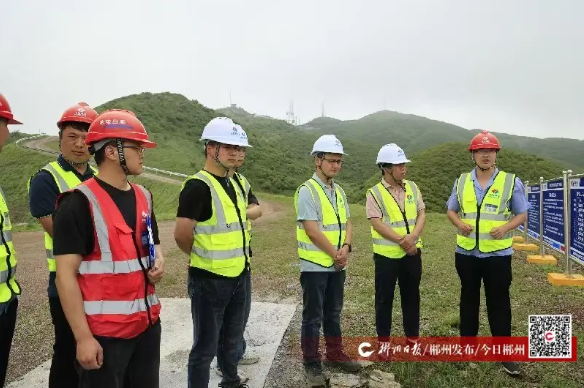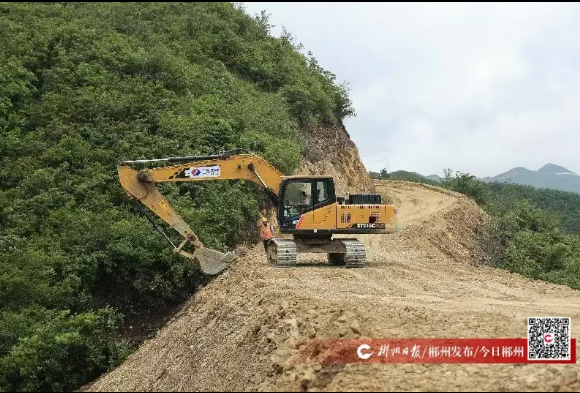Guiyang County promotes transformation through wind, solar power projects
2025-05-30
The construction site of the Ouyanghai Wind Farm (Phase II) project was a hive of activity on May 26.

In recent years, Guiyang has vigorously promoted the development and utilization of wind and solar power. Windmills and photovoltaic panels have formed a unique landscape in Guiyang County.
The project is located in Sizhou Mountain in the northern part of Guiyang County. It plans to install 10 wind turbines with a single capacity of 5 megawatts, with a total installed capacity of 50 megawatts.
Recently, the construction team of the project has worked overtime and in shifts to promote the construction of supporting infrastructure such as access roads in spite of the heavy rainfall and other difficulties.

“At present, the road construction is under way, with 3 kilometers of unpaved roads built,” said Shao Libing, executive deputy manager of the project.
In the next stage, foundation pouring, heavy cargo transportation, wind turbine hoisting, equipment debugging, and grid connection work will be carried out to ensure full capacity grid connected power generation by the end of the year.
Once the second phase project is completed, it is expected to generate 138 million kilowatt hours of electricity annually, saving 35,000 tons of standard coal and reducing 90,000 tons of carbon dioxide emissions.

This will help alleviate local electricity pressure, further optimize the energy structure, and promote green and low-carbon development.
At the site of Longyuan Composite Photovoltaic Power Generation Project in Chenxi Village, Guiyang County, workers were installing photovoltaic panels, debugging relevant equipment and parameters, and making final preparations for the successful grid connection and power generation of the Phase II project in Chenxi Village.
The energy storage power station in this project adopts the induction filtering and energy storage technology scheme, which is the first of its kind in China.
The total investment of this project is 2 billion yuan, with a total land area of 4,880 mu (325.33 hectares). After grid connection, it is expected to deliver an average of 18.9 MWh (megawatt hours) of green electricity per year, saving 61,800 tons of standard coal and reducing 180,000 tons of carbon dioxide emissions annually.

In recent years, the county government has fully utilized abundant wind and solar energy resources in mountainous towns and villages to vigorously develop wind and photovoltaic industries, in a bid to support rural revitalization.
This year, the county has built 7 wind power projects with a total installed capacity of 532,400 kilowatts and 3 photovoltaic projects with a total installed capacity of 13,500 kilowatts, becoming a strong new driving force for Guiyang’s transformation and development.
Chinese source: czxww




